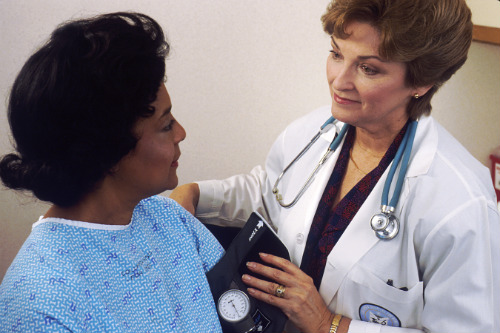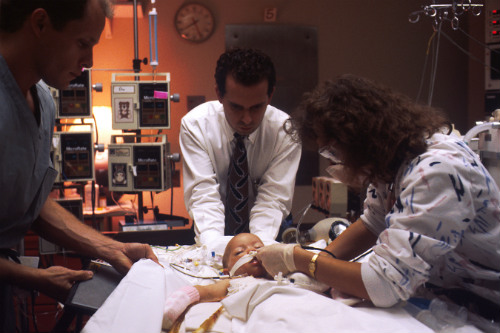- Implementation of PCMH practices improves the efficiency with which care is delivered. A PCMH practice can significantly improve financial outcomes.
- The widespread implementation of PCMHs is seen as essential by the Agency for Healthcare Research and Quality (AHRQ) to improving care nationwide.
- A PCMH can deliver financially efficient, patient-centered, multi-specialty primary care within a single practice.
- AHRQ urges widespread implementation of PCMH practice as an essential way to improve the quality and efficiency of U.S. healthcare.

Revitalizing the Nation’s primary care system is foundational to achieving high-quality, accessible, efficient health care for all Americans. The primary care medical home, also referred to as the patient centered medical home, advanced primary care, and the healthcare home, is a promising model for transforming the organization and delivery of primary care.
Because the implementation of PCMH practices improves the efficiency with which care is delivered, a PCMH practice can significantly improve financial outcomes.
What Does It Mean?
“When I describe the patient-centered medical home to practices, providers, or to anyone—all of us are patients at one point or another—I like to say it’s really the way we, as patients, would like to see our care delivered,” said Judith Steinberg, MD, MPH, in an article in Medical Economics. Dr. Steinberg is the Deputy Chief Medical Officer for the UMass Medical School's Commonwealth Medicine division. The Commonwealth Medicine division recently participated in a multi-payor PCMH demonstration project.
Becoming a PCMH means that you and your partners transform your approach to organizing and delivering medical care. The challenge is turning this concept into medical practice. What does it look like in the real world?
There is no PCMH certification or formal standard. However, this site offers a toolbox that a practice can use to gauge whether it is functioning as a PCMH. According to the AHRQ website, there are the 5 essential characteristics of a PCMH:
- Comprehensive Care: The primary care medical home is accountable for meeting the large majority of each patient’s physical and mental health care needs, including prevention and wellness, acute care, and chronic care. Providing comprehensive care requires a team of care providers. This team might include physicians, advanced practice nurses, physician assistants, nurses, pharmacists, nutritionists, social workers, educators, and care coordinators. Although some medical home practices may bring together large and diverse teams of care providers to meet the needs of their patients, many others, including smaller practices, will build virtual teams linking themselves and their patients to providers and services in their communities.
- Patient-Centered: The primary care medical home provides health care that is relationship-based with an orientation toward the whole person. Partnering with patients and their families requires understanding and respecting each patient’s unique needs, culture, values, and preferences. The medical home practice actively supports patients in learning to manage and organize their own care at the level the patient chooses. Recognizing that patients and families are core members of the care team, medical home practices ensure that they are fully informed partners in establishing care plans.
- Coordinated Care: The primary care medical home coordinates care across all elements of the broader health care system, including specialty care, hospitals, home health care, and community services and supports. Such coordination is particularly critical during transitions between sites of care, such as when patients are being discharged from the hospital. Medical home practices also excel at building clear and open communication among patients and families, the medical home, and members of the broader care team.
- Accessible Services: The primary care medical home delivers accessible services with shorter waiting times for urgent needs, enhanced in-person hours, around-the-clock telephone or electronic access to a member of the care team, and alternative methods of communication such as email and telephone care. The medical home practice is responsive to patients’ preferences regarding access.
- Quality and Safety: The primary care medical home demonstrates a commitment to quality and quality improvement by ongoing engagement in activities such as using evidence-based medicine and clinical decision-support tools to guide shared decision making with patients and families, engaging in performance measurement and improvement, measuring and responding to patient experiences and patient satisfaction, and practicing population health management. Sharing robust quality and safety data and improvement activities publicly is also an important marker of a system-level commitment to quality.

The PCMH Is Technology Oriented
The U.S. Department of Health and Human Services Health Resources and Services Administration recommends that PCMH practices implement the following technologies:
- Electronic health record system/electronic medical record system
- Patient health record system
- A patient portal
- A provider portal (Healthcare providers can track their patients’ referrals and consultations with other providers)
- A payor portal (Providers and payers can address insurance issues electronically)
- A telehealth system
Practice Culture Facilitates Change
According to a study published recently in the Journal of General Internal Medicine, the workplace culture within a medical practice can have a profound influence on that practice’s ability to accomplish change.
The authors wrote:
The role of practice culture in successful implementation of practice-based interventions is particularly relevant for practice transformation initiatives in primary care. Previous work shows the importance of internal relationships and effective teams for providing excellent chronic disease care and achieving the hallmarks of patient-centered medical homes.
Positive change culture and work culture among clinicians and staff members may reflect practice capacities that are essential for successful implementation of practice transformation initiatives such as CQI approaches.
Part of transforming a practice into a PCMH will likely require a culture of change within the practice. In some cases, this culture exists spontaneously. In others, it must be created through educational programs, innovation rewards programs, financial incentives for innovation, among other means.
